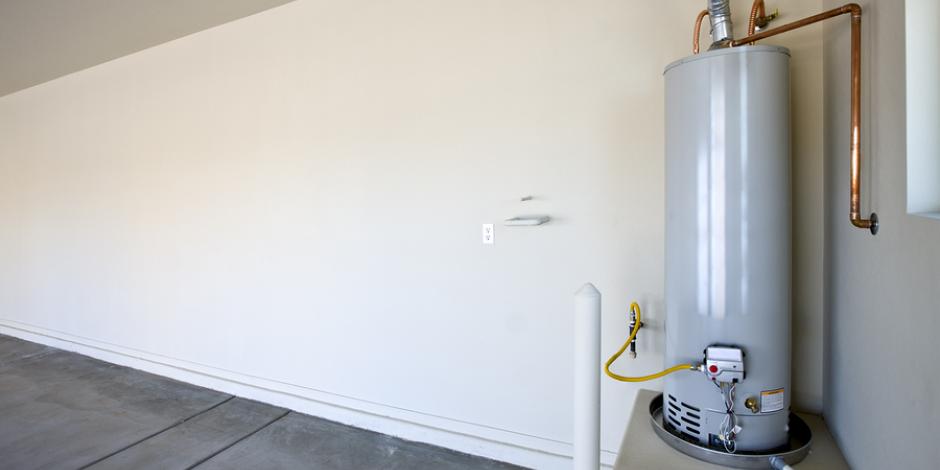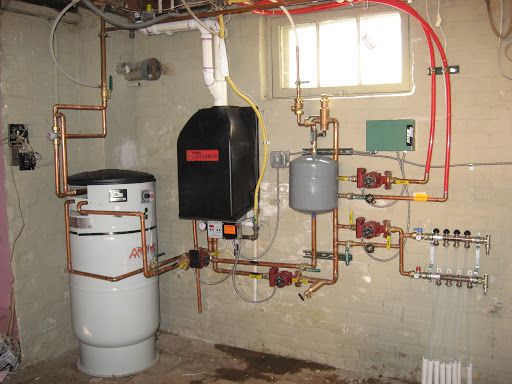We have stumbled on this great article involving Water Heater Maintenance Tips You Can't Afford to Forget listed below on the web and concluded it made good sense to quickly share it with you in this article.

Hot water is essential for day-to-day convenience, whether it's for a refreshing shower or washing recipes. To guarantee your hot water system runs successfully and lasts much longer, routine maintenance is vital. This post offers useful pointers and understandings on exactly how to maintain your home's warm water system to prevent disruptions and pricey repair services.
Introduction
Keeping your home's hot water system might appear difficult, but with a couple of easy actions, you can guarantee it operates efficiently for many years ahead. This overview covers everything from recognizing your hot water system to do it yourself maintenance pointers and understanding when to hire specialist assistance.
Relevance of Preserving Your Warm Water System
Routine maintenance not just prolongs the lifespan of your hot water system but additionally guarantees it operates successfully. Ignoring maintenance can lead to lowered effectiveness, higher power expenses, and even early failure of the system.
Indicators Your Warm Water System Needs Upkeep
Understanding when your hot water system requires focus can avoid significant issues. Watch out for signs such as inconsistent water temperature level, strange sounds from the heating system, or rusty water.
Purging the Hot Water Heater
Flushing your hot water heater removes sediment build-up, improving effectiveness and lengthening its life.
Checking and Replacing Anode Rods
Anode poles protect against corrosion inside the storage tank. Evaluating and replacing them when worn is important.
Facility Problems Calling For Expert Aid
Examples consist of major leakages, electric issues, or if your hot water heater is regularly underperforming.
Regular Professional Upkeep Conveniences
Expert upkeep can include extensive assessments, tune-ups, and ensuring compliance with safety and security standards.
Checking and Adjusting Temperature Setups
Readjusting the temperature setups makes certain optimal performance and safety and security.
DIY Tips for Maintenance
You can do numerous maintenance tasks on your own to maintain your hot water system in top problem.
Looking for Leaks
Frequently evaluate pipes and connections for leaks, as these can cause water damages and higher expenses.
Comprehending Your Warm Water System
Prior to diving into maintenance jobs, it's handy to understand the basic elements of your warm water system. Normally, this consists of the water heater itself, pipes, anode rods, and temperature controls.
Regular Monthly Upkeep Tasks
Normal month-to-month checks can help catch minor problems before they intensify.
Checking Stress Alleviation Valves
Examining the stress relief valve guarantees it operates properly and avoids excessive pressure build-up.
Protecting Pipes
Insulating hot water pipelines minimizes warm loss and can save energy.
When to Call a Specialist
While do it yourself maintenance is advantageous, some issues require specialist know-how.
Final thought
Regular maintenance of your home's warm water system is necessary for effectiveness, longevity, and price savings. By following these tips and knowing when to look for specialist aid, you can make sure a trustworthy supply of hot water without unforeseen disruptions.
Water Heater Maintenance: The Basics
Maintaining your water heater will ensure it operates efficiently and has a longer lifespan. Neglecting regular maintenance can lead to costly repairs and an even bigger chunk of your savings if you have to replace it sooner than necessary. But there’s good news: Most water heater maintenance tasks are relatively simple and easy for homeowners with basic DIY skills.
Flush the Water Heater
Over time, sediment and minerals can build up in the tank, reducing its efficiency and potentially causing damage. To flush the tank, turn off the power or gas supply, attach a hose to the drain valve near the bottom and open the valve to drain the water until it runs clear. Ideally, flush the tank annually.
Replace the Anode Rod
The anode rod is a sacrificial metal rod that helps prevent corrosion inside the tank. Inspect and replace it every three to five years or per the manufacturer's recommendation. To replace the anode rod, turn off the power or gas supply, drain a few gallons of water from the tank, unscrew the old rod and replace it with a new one. If the anode rod is significantly corroded or covered in calcium buildup, it's a sign the water heater may need to be replaced soon.
Tune-Up
A yearly tune-up can help identify potential issues and ensure your water heater operates at peak efficiency. This typically involves checking the thermostat, burner assembly (for gas heaters) and any other components specified by the manufacturer. During a tune-up, the technician may also clean the burner and adjust the pilot light (for gas heaters) or examine the heating elements (for electric heaters).
How to Maintain Your Water Heater
Insulate the tank. Insulating the tank can improve energy efficiency and reduce heat loss, saving you money on energy bills. You can purchase precut insulation blankets designed specifically for water heaters or use standard fiberglass insulation wrapped securely around the tank. Check the temperature. The recommended water temperature for most households is around 120 degrees Fahrenheit (49 degrees Celsius). Higher temperatures can increase energy costs and potentially cause scalding. Use a kitchen thermometer to check the temperature at the faucet nearest the water heater. Monitor water pressure. Excessive water pressure can strain the water heater and cause leaks or even tank failure. Install a pressure-reducing valve if necessary. The ideal water pressure range is between 60 and 70 PSI (pounds per square inch). Test the temperature and pressure (T&P) relief valve. The T&P relief valve is a safety feature that releases pressure if the tank gets too hot or the pressure builds up too high. Test it annually by lifting the lever and allowing a small amount of water to release. Replace the valve if it doesn't release water or reseal properly. Check for leaks. Regularly inspect the tank, pipes and fittings for leaks or corrosion. Deal with issues promptly to prevent further damage. Even a small leak can lead to significant water damage over time. Consider a tankless water heater. If your traditional tank-style water heater is nearing the end of its lifespan ( typically 10 years), consider replacing it with a tankless water heater. These units heat water on demand, reducing standby energy losses and potentially saving you money on your energy bills. Schedule professional maintenance. While homeowners can perform many water heater maintenance tasks, it's still a good idea to schedule professional maintenance every few years. A plumber or HVAC technician can thoroughly inspect the unit, identify potential issues and ensure it operates safely and efficiently. https://www.homeserve.com/en-us/blog/home-improvement/hot-water-heater-maintanence/

Do you enjoy reading about How to Maintain a Hot Water Heater in a Few Simple Steps? Try leaving a comment down the page. We will be pleased to know your thinking about this write-up. We hope that you come back again later on. Make sure you take the opportunity to promote this content if you liked it. Thank you so much for your time spent reading it.
Additional Resources